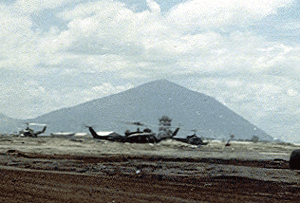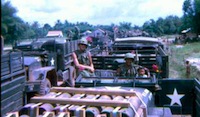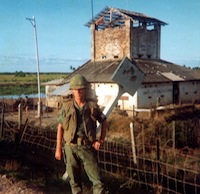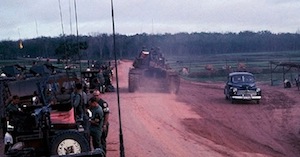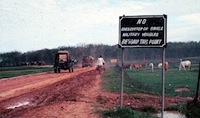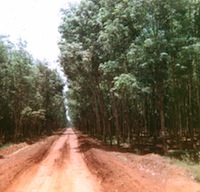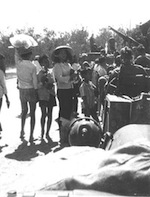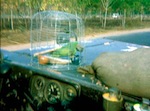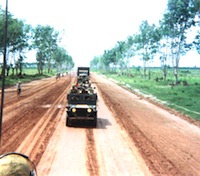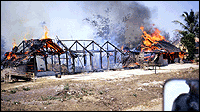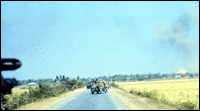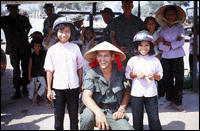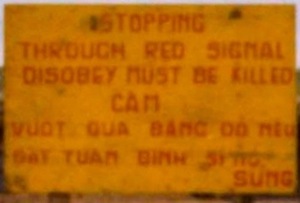This kid would get candy, food and a lot of attention. After a while we would be on our way again.
I do not recall any other villages by name but I do recall one particular Check Point... "Charlie Papa 21." I don't why I recall this particular Check Point. It has been in my mind from time to time for all these years."
When we approached the Michelin Rubber Plantation things would get very tense. I can recall Choppers overhead, firing rockets into that area. There was also a fire support base to our right. Then, from miles away, we could always see the Nui Ba Den...Black Virgin Mountain. I have left out several key sites but, it is only because I don't recall them or my memory of them is to vague.
When the convoy approached Tay Ninh there seemed to always be a warning to check our gas masks.
I seem to recall that we would be arriving in Tay Ninh around 1 or 2:00 PM. While the trucks were being unloaded would refuel and then go to a designated area for rest. Most would sit around and bull-shit or some would nap. Then the long trip back to Long Binh would begin once again.
There were times when the Monsoon Rains came, it would rain like hell. When it did the first thing I would do is check and make sure my cigarettes were secure so they wouldn't get wet. After trying several times to light a soggy cigarette it didn't take long to learn to keep them dry.
But the most memorable thing about the Monsoons was the temperature of the rain, it would feel very cold, cold enough for a field jacket. To get warm I would stand near the tail pipe of the jeep whenever we were stopped. I recall stopping one time near Cu Chi on our way back to Long Binh, I think it was because of some security issues about the highway. I was standing at the back of the jeep near the tailpipe warming up when I looked around and saw the tallest Vietnamese I had ever seen. I recall him being an officer. He was well over six foot tall.
Most often we would take the same route back but, there were a couple of times when we took a different route. I do not recall this route name. I do recall a Highway 1A. My memory of Highway 1 and Highway 1A may be the same...I'm not sure. We would get back to Long Binh Post around midnight. At this time we would clean and turn in our weapons and jeep. Then we would off duty for 24 hours and start all over again." SP/4 Larry J. Kimbrough, B Company, 720th Military Police Battalion, April 1968 to June 1968, and 557th MP Company, 95th MP Battalion, June 1968 to March 1969.


















